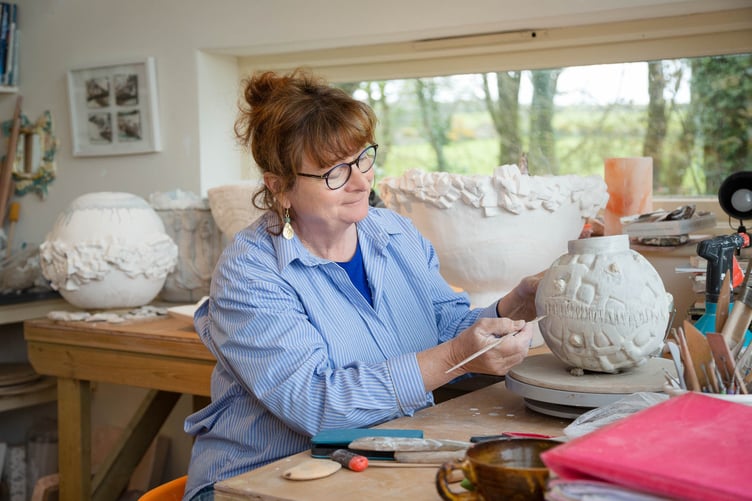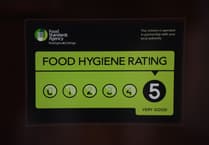CHINA clay dug from the Wheal Martyn pit near St Austell has been used to create intricate ceramic works which have gone on display at the tourist attraction.
The new exhibition at the Wheal Martyn Clay Works museum and heritage centre has been created by ceramicist Caroline Winn whose works have been inspired by crystalline salt structures.
The displays — entitled Expressions of Salt and China Clay Traces — draw a parallel between the harvesting of salt and the mining of china clay.
Both materials have been highly valued and extensively transported across the world over time.
A spokesperson for Wheal Martyn said: “The exhibition features a new body of ceramic work which explores Caroline’s ‘salt journey’ and includes collagraph prints of these works, as well as new pieces created with china clay dug from the Wheal Martyn pit.
“Caroline started by growing large salt crystals in her studio. Cubic in form, these tiny cubes grew tightly bound together. She then went on to produce 3D digital images of the crystals and, using a 3D printer, produced reverse moulds for the clay.
“This creative process has enabled Caroline to capture and faithfully depict the intricate structure and form of salt crystals in her work.
“Based in West Cornwall and London, Caroline has been exhibiting her work throughout the UK during her long and established career. Fascinated by both clay and salt, especially their many associations and histories, Caroline is hoping to draw attention to stories around migration and trade.
“China clay was first used in China more than 10,000 years ago to make fine white porcelain and became highly prized by European ceramics producers and other industries.
“Salt, meanwhile, has been traded for thousands of years, as an essential nutrient for both humans and animals. It is a sought-after commodity that has been taxed to fund states, as well as sometimes being used as a weapon of environmental destruction in periods of strife.”
Exhibition and engagement officer Sian Powell said: “We are delighted to be bringing this new body of work by Caroline Winn to Cornwall, which will offer an insight into her creative ‘salt journey’ process from salt crystal to finished ceramic.”
Wheal Martyn Clay Works is set in 26 acres and its collections and historic buildings are preserved to tell the story of Cornwall’s largest mining industry.
There are opportunities for learning and community engagement – ever more important today as fewer people have first-hand experience of the industry which shaped the lives of people, the landscape and the economy in Mid-Cornwall.
The exhibition will be on display around the museum and in the Roger Preston Gallery until Monday, July 1. Entry is included in the general admission fee.





Comments
This article has no comments yet. Be the first to leave a comment.